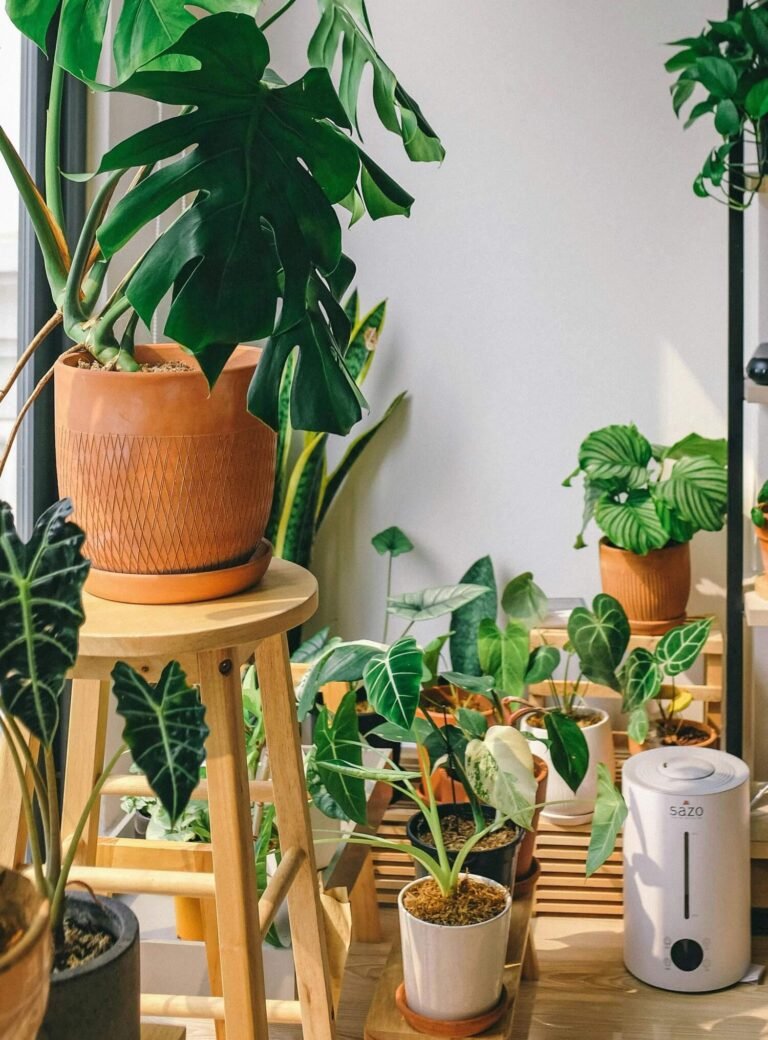Table of Contents
Discover how a humidifier can boost your comfort and health right at home!
Indoor air quality affects your well-being. Experts from the American Lung Association warn that dry air can harm your respiratory system. A humidifier adds moisture to the air and eases dry skin, throat irritation, and allergy symptoms. Whether you choose a portable or whole-house model, picking the right humidifier improves your home’s air quality.
This guide gives you clear tips on choosing and caring for a humidifier. We use trusted information from experts and reliable sources.
Section 1: Why a Humidifier is Essential for Your Home
Dry air can make your skin feel tight and your sinuses sore. A humidifier puts moisture back into the air to help you breathe easier and stay comfortable.
Pros
- Reduces dry skin, throat irritation, and nasal congestion
- Helps stop the spread of airborne viruses
- Decreases static electricity at home
- Supports the growth of indoor plants
Cons
- Needs regular cleaning to stop mold or bacteria
- Too much moisture may cause mold if not managed well
Pro Tip: Use a hygrometer to check that indoor humidity stays between 30% and 50%.
Section 2: Types of Humidifiers
Humidifiers come in many types. We explain the most common models so you can make an informed choice.
1. Ultrasonic Humidifiers:
These humidifiers use fast vibrations to create a fine mist. They work quietly and are great for bedrooms and offices.
- Pros: Quiet, energy-saving, and low-cost
- Cons: May not use filters, which can send minerals into the air if tap water is used
2. Cool Mist Humidifiers:
They blow out a cool mist with a fan. These work well in large rooms and often save energy compared to warm mist options.
- Pros: Energy efficient and good for big spaces
- Cons: Fan noise may be a concern
3. Warm Mist Humidifiers:
They boil water to make steam that releases gentle warmth. This can help soothe cold symptoms.
- Pros: Warm mist feels comforting in cold weather
- Cons: Uses more energy and may not be safe around children or pets
4. Evaporative Humidifiers:
These use a wick filter to soak up water while a fan blows air through. They balance humidity naturally.
- Pros: Self-regulates and rarely over-humidifies a room
- Cons: You need to change the filter regularly
5. Whole-House Humidifiers:
They connect to your HVAC system and keep your whole home comfortable. They work well for larger houses or dry regions.
- Pros: Covers large areas and needs less upkeep
- Cons: Costs more initially and needs a pro for installation
Pro Tip: If you have allergies or asthma, choose a humidifier with a HEPA filter to lower allergens.
Section 3: Key Features to Look for in a Humidifier
Good humidifiers offer useful features. Choose one that fits your needs for the best results.
1. Humidity Control:
Look for models with adjustable settings or sensors that keep the humidity at a proper level. This stops over-humidification.
2. Capacity:
Units come in different sizes. Choose one that fits your room size, whether you need a small or a large unit.
3. Noise Level:
If you plan to use it in a bedroom or work area, select a quiet model. Ultrasonic models often work best.
4. Filter vs. Filterless:
Some humidifiers use filters to capture minerals and impurities. Filterless models need less care but might release minerals into the air if tap water is used.
Pro Tip: If you use tap water, choose a model with a filter or use distilled water to keep your humidifier clean.
Section 4: Best Humidifiers for Different Needs
Select a humidifier that suits your space. We suggest top models for various needs to help you decide easily.
1. Best for Large Rooms:
The Levoit Classic 300S Ultrasonic Humidifier has a 6-liter tank. It covers spaces up to 505 square feet and is perfect for open living areas.
2. Best for Bedrooms:
The Pure Enrichment MistAire Ultrasonic Cool Mist Humidifier offers quiet operation and lasts up to 16 hours. Its compact style suits small spaces.
3. Best for Allergies:
The Honeywell HCM-350 Germ-Free Cool Mist Humidifier uses UV light to kill 99.9% of bacteria and mold. This helps create cleaner air for allergy sufferers.
4. Best for Babies’ Rooms:
The TaoTronics Cool Mist Humidifier is ideal for nurseries. It has a gentle night light and works quietly to create a safe sleep setting.
Pro Tip: In baby or bedroom settings, select a cool mist humidifier to avoid risks from hot water or steam.
Section 5: How to Maintain Your Humidifier
Regular upkeep keeps your humidifier safe and efficient. Follow these simple steps to maintain good performance.
1. Clean Regularly:
Empty the water tank each day to avoid mineral buildup. Clean with a mild vinegar solution weekly to remove deposits.
2. Replace Filters:
Follow the manufacturer’s advice and replace filters as needed. This keeps the water clean and pure.
3. Use Distilled Water:
Using distilled water lowers mineral buildup and stops white dust from appearing in your home.
Pro Tip: Clean the water tank regularly with a mix of water and white vinegar to stop mold and bacteria.
Conclusion:
A humidifier is a smart choice for improving indoor air quality, especially in dry climates. It boosts your comfort, helps your skin, and supports breathing. Follow expert advice and trusted sources when you choose one.
Ready to improve your home’s air? Explore our humidifier options here: https://amzn.to/3U6yIK9
As an Amazon Associate, I earn from qualifying purchases.
Frequently Asked Questions
How do I know if my home needs a humidifier?
Dry skin, irritated sinuses, and increased static electricity may indicate reduced indoor humidity.
How often should I clean my humidifier?
It is best to empty and rinse the tank daily and perform a deeper clean with vinegar weekly.
Can I use tap water in my humidifier?
Tap water can be used in some models, but distilled water is preferred to reduce mineral buildup and white dust.
Last updated on May 19, 2025







